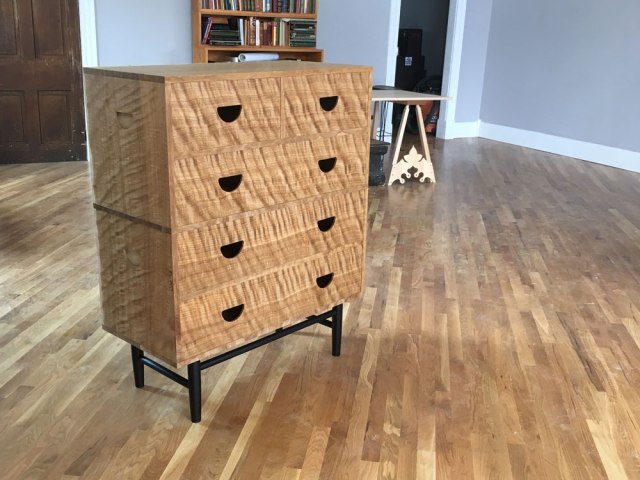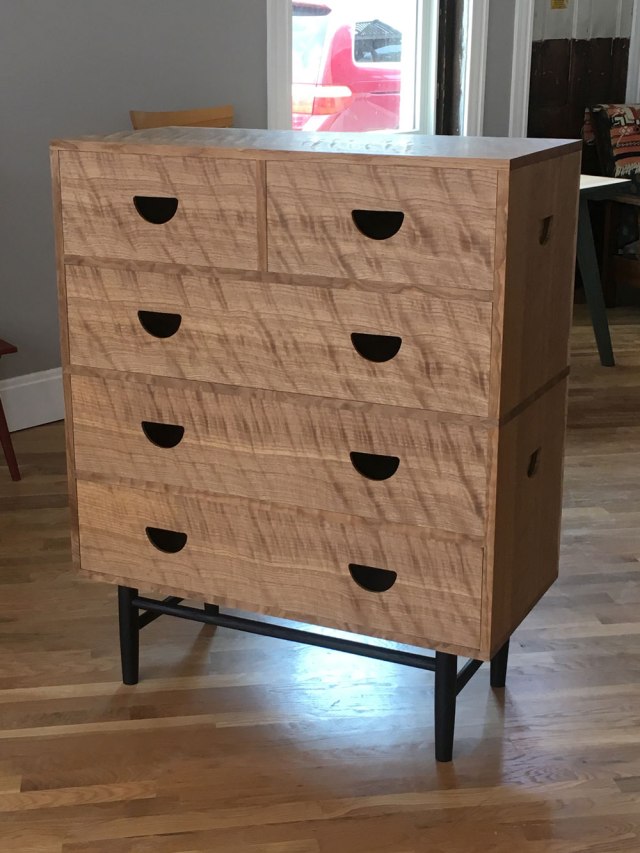
If you’ve been following my work for more than a few weeks then you might have winced a bit when you saw the image at the top of this blog entry.
The curly oak figure in the chest is a bit of a departure for me. For the last 20 years I’ve sought out boards that have a mellow, understated grain. This has always been intentional. Loud woods can obscure a good form or – put another way – attract unwanted attention away from a weak form.
For me, the form of a piece is what I like (or dislike) the most. Incidentally, that’s why I like paint. Nothing strips away the bread and circuses of fiddleback hoo-ha like a democratic coat of pigment.
So what the heck is going on in the above photo? Short answer: I don’t believe in free will.
Longer answer: I’ve had this chest design in my sketchbook for many months and decided in May to release itself on its own recognizance. My initial plan was to build it in white maple or Baltic birch. But while buying some oak at Frank Miller Lumber in Union City, Ind., there were four boards of curly quartersawn white oak sitting in the middle of the warehouse.
I put my measuring tape on them and realized that there was exactly enough to make my chest design. The price was ridiculously cheap. I had the money.

The oak is outrageous, and so I did what I could to turn down its visual volume. Usually you’ll read articles about how to accentuate curled woods with an undercoat of linseed oil or dye. I did neither of these things. In fact, I muted the curl by using a super blond shellac instead of my typical favorite, garnet.
Even so, I was worried about the curl obscuring the piece’s form.
I’m not quite done with the finishing process. I still need to rub out the shellac and add a coat of a linseed oil/wax that I’ve become quite fond of (more on that later). That should tone down the gloss of the shellac and I’ll end up where the figure and the form are in balance.
— Christopher Schwarz